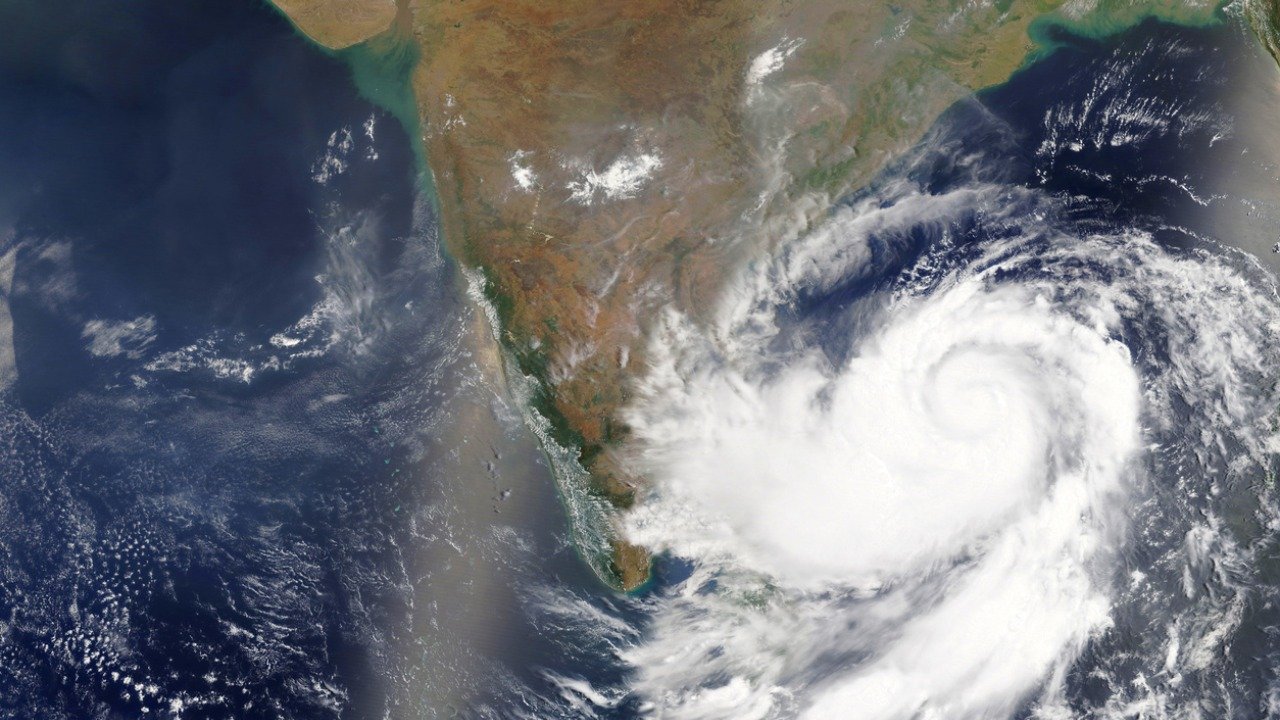
NEW DELHI, July 29, 2021 (BSS/PTI) - The intensity of severe cyclonic storms in the North Indian Ocean region has shown an increasing trend in the past four decades, according to a recent study by Indian scientists.
The increasing intensity of severe cyclonic storms with major socioeconomic implications was due to atmospheric parameters like higher relative humidity, especially at mid-atmospheric level, weak vertical wind shear as well as warm sea surface temperature (SST).
This indicates the role of global warming in bringing about this increasing trend, the study suggests.
A team of scientists, including Jiya Albert, Athira Krishnan, and Prasad K Bhaskaran from the Department of Ocean Engineering and Naval Architecture, IIT Kharagpur, jointly with K S Singh, Centre for Disaster Mitigation and Management, VIT University, Vellore, studied the role and influence of critical atmospheric parameters in large-scale environmental flow and El Nino-Southern Oscillation (ENSO) on tropical cyclone activity in the North Indian Ocean.
They were supported by the Department of Science and Technology (DST) under the Climate Change Programme (CCP).
In particular, the tropical cyclones that formed during the pre-monsoon season exhibited an increasing trend. In the recent decade (2000 onwards), the trend was found to be quite substantial in both Bay of Bengal and the Arabian Sea basins.
Findings from the study indicated that strong mid-level relative humidity (RH), positive low-level relative vorticity (RV), weak vertical wind shear (VWS), warm sea surface temperature (SST), and suppressed outgoing longwave radiation (OLR) are responsible for the increased tropical cyclone activity in the North Indian Ocean.
It was found that RH, RV, VWS are distinct during pre-monsoon seasons of La Nina, and that favours the genesis of severe cyclone formation over this region.
Environmental variables such as SST, wind streamlines, vertical velocity, and specific humidity exhibited comparable contributions towards cyclogenesis during both El Nino and La Nina phases.
Investigation of the role of additional parameters such as water vapour and zonal sea-level pressure gradients revealed the possible linkage of La Nina years on increased severity of tropical cyclones.
The study reported an increased amount of water vapour content in the troposphere, and during the past 38 years at 1.93 times as compared to the base year 1979.
During the past two decades (2000-2020), the La Nina years experienced almost double the number of intense cyclones compared to the El Nino years.
Besides, during La Nina years, the positional shifts in average cyclogenesis of intense cyclones in Bay of Bengal are analogous with the observations for the western North Pacific Ocean basin.
An increasing trend in the climatological distribution of water vapour content was also seen during these years, with peaks localised over the Andaman Sea and North China Sea regions in conjunction with the increased frequency of severe cyclones.
The new findings from this study are expected to augment advanced research in tropical cyclone activity for the North Indian Ocean region and also provide the scope for a detailed investigation on the possible linkages with other climate indices over the North Indian Ocean.
"The impact of global warming due to climate change and its effect on extreme weather events such as frequency and high-intensity tropical cyclones formed over global ocean basins is a matter of concern. High-intensity cyclones have become more frequent in the North Indian Ocean, causing significant risk and vulnerability to the coastal regions," the DST said.
The research, which demonstrated substantial correlation with a measure on the destructive potential of tropical cyclones called Power Dissipation Index, was published in the journal 'Climate Dynamics' recently.
Earlier this month, another study said the frequency of cyclones in the Arabian Sea increased by 52 per cent and the number of very severe cyclones has risen by 150 per cent between 1982 to 2019 compared to two decades before that, according to a recent study.
The Bay of Bengal, on the other hand, has witnessed a slight decrease in the frequency of cyclones during the same period.
M K Roxy, a co-author of the study, said the increase in cyclone activity in the Arabian Sea is tightly linked to the rising ocean temperatures and increased availability of moisture due to global warming. The study was conducted by Medha Deshpande, Vineet Kumar Singh, Mano Kranthi Gandhi, M K Roxy, R Emmanuel, Umesh Kumar.
They belong to the Indian Institute of Tropical Meteorology; Department of Atmospheric and Space Sciences, Savitribai Phule Pune University; School of Environmental and Earth Sciences, KBC North Maharashtra University, Jalgaon; Department of Earth and Atmospheric Sciences, National Institute of Technology, Rourkela.